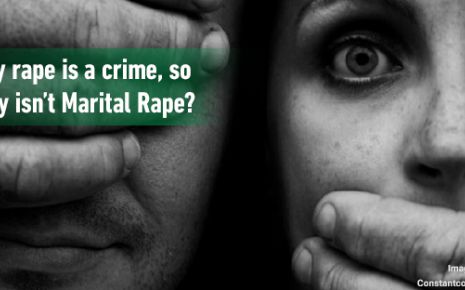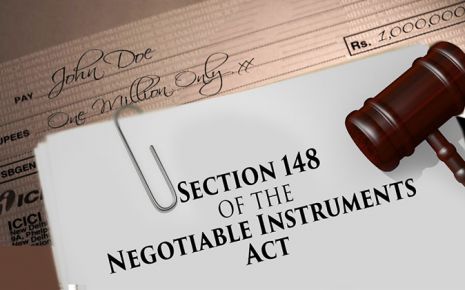Unveiling The Distinction: Law Of Evidence v/s Evidence Law
The legal system is an intricate tapestry of various branches, each serving a
unique purpose. Two such branches, often used interchangeably but holding
distinct significance, are the "Law of Evidence" and Evidence Law. While
both terms revolve around the domain of evidence in legal proceedings, they
differ in scope and focus. This article aims to elucidate the disparities
between the Law of Evidence and Evidence Law, shedding light on their individual
functions within the legal framework.
Understanding The Law Of Evidence
The Law of Evidence is a comprehensive set of principles and rules that govern the admissibility, presentation, and evaluation of evidence in a court of law. It outlines the procedures by which facts are established, verified, and considered relevant to a case. The Law of Evidence focuses on the process of gathering, analyzing, and presenting evidence to support or challenge legal claims.
It encompasses a wide range of topics, including burden of proof, credibility of witnesses, hearsay, expert testimony, and the examination of physical evidence. Essentially, the Law of Evidence establishes the guidelines for the proper administration of justice by ensuring the reliability and fairness of evidence presented in court.
Exploring Evidence Law
Evidence Law, on the other hand, refers to the body of laws, statutes, and regulations that govern the entire framework within which evidence is obtained, preserved, and presented in legal proceedings. It encompasses not only the rules governing admissibility but also the procedures for collecting, preserving, and disclosing evidence before and during a trial.
Evidence Law also encompasses rules regarding the chain of custody, authentication, privilege, and the use of technology in presenting evidence. It provides the framework within which the Law of Evidence operates, ensuring that evidence is lawfully obtained and fairly presented.
Distinguishing Factors
While the terms "Law of Evidence" and "Evidence Law" may sound similar, they possess distinctive characteristics that set them apart within the legal framework. The Law of Evidence pertains to the rules governing the admissibility, presentation, and evaluation of evidence during a trial, focusing on substantive aspects.
Evidence Law, on the other hand, encompasses a broader range of regulations that govern the entire process of obtaining, preserving, and presenting evidence, including both substantive and procedural aspects. By understanding these differences, legal professionals and individuals involved in the legal system can navigate the intricate web of evidence-related regulations more effectively, thereby ensuring a fair and just legal process.
Understanding The Law Of Evidence
The Law of Evidence is a comprehensive set of principles and rules that govern the admissibility, presentation, and evaluation of evidence in a court of law. It outlines the procedures by which facts are established, verified, and considered relevant to a case. The Law of Evidence focuses on the process of gathering, analyzing, and presenting evidence to support or challenge legal claims.
It encompasses a wide range of topics, including burden of proof, credibility of witnesses, hearsay, expert testimony, and the examination of physical evidence. Essentially, the Law of Evidence establishes the guidelines for the proper administration of justice by ensuring the reliability and fairness of evidence presented in court.
Exploring Evidence Law
Evidence Law, on the other hand, refers to the body of laws, statutes, and regulations that govern the entire framework within which evidence is obtained, preserved, and presented in legal proceedings. It encompasses not only the rules governing admissibility but also the procedures for collecting, preserving, and disclosing evidence before and during a trial.
Evidence Law also encompasses rules regarding the chain of custody, authentication, privilege, and the use of technology in presenting evidence. It provides the framework within which the Law of Evidence operates, ensuring that evidence is lawfully obtained and fairly presented.
Distinguishing Factors
- Scope:
The Law of Evidence is primarily concerned with the principles and rules surrounding the admissibility, presentation, and evaluation of evidence within the courtroom. It deals with the substantive aspects of evidence in legal proceedings. Conversely, Evidence Law encompasses a broader spectrum of rules and regulations that govern the entire process of obtaining, preserving, and presenting evidence. It covers both the substantive and procedural aspects of evidence in legal proceedings.
- Focus:
The Law of Evidence emphasizes the rules that dictate how evidence is treated and evaluated during a trial. It concentrates on the principles that guide the court's determination of the probative value and relevance of evidence. Evidence Law, however, goes beyond the trial process and focuses on the procedures and guidelines that apply before, during, and after a trial. It addresses issues such as the discovery of evidence, rules of evidence in administrative hearings, and the preservation of evidence for appeals.
- Application:
The Law of Evidence is typically applied by judges during trial proceedings. It helps them make informed decisions on the admissibility and weight of evidence. Conversely, Evidence Law is applied by various legal professionals, including attorneys, investigators, and law enforcement officers, in their roles of collecting, preserving, and presenting evidence. It governs their actions and ensures that evidence is obtained in a manner consistent with legal principles.
While the terms "Law of Evidence" and "Evidence Law" may sound similar, they possess distinctive characteristics that set them apart within the legal framework. The Law of Evidence pertains to the rules governing the admissibility, presentation, and evaluation of evidence during a trial, focusing on substantive aspects.
Evidence Law, on the other hand, encompasses a broader range of regulations that govern the entire process of obtaining, preserving, and presenting evidence, including both substantive and procedural aspects. By understanding these differences, legal professionals and individuals involved in the legal system can navigate the intricate web of evidence-related regulations more effectively, thereby ensuring a fair and just legal process.
Law Article in India
Legal Question & Answers
Lawyers in India - Search By City
LawArticles
How To File For Mutual Divorce In Delhi

How To File For Mutual Divorce In Delhi Mutual Consent Divorce is the Simplest Way to Obtain a D...
Increased Age For Girls Marriage

It is hoped that the Prohibition of Child Marriage (Amendment) Bill, 2021, which intends to inc...
Facade of Social Media

One may very easily get absorbed in the lives of others as one scrolls through a Facebook news ...
Section 482 CrPc - Quashing Of FIR: Guid...

The Inherent power under Section 482 in The Code Of Criminal Procedure, 1973 (37th Chapter of t...
The Uniform Civil Code (UCC) in India: A...

The Uniform Civil Code (UCC) is a concept that proposes the unification of personal laws across...
Role Of Artificial Intelligence In Legal...

Artificial intelligence (AI) is revolutionizing various sectors of the economy, and the legal i...







Please Drop Your Comments